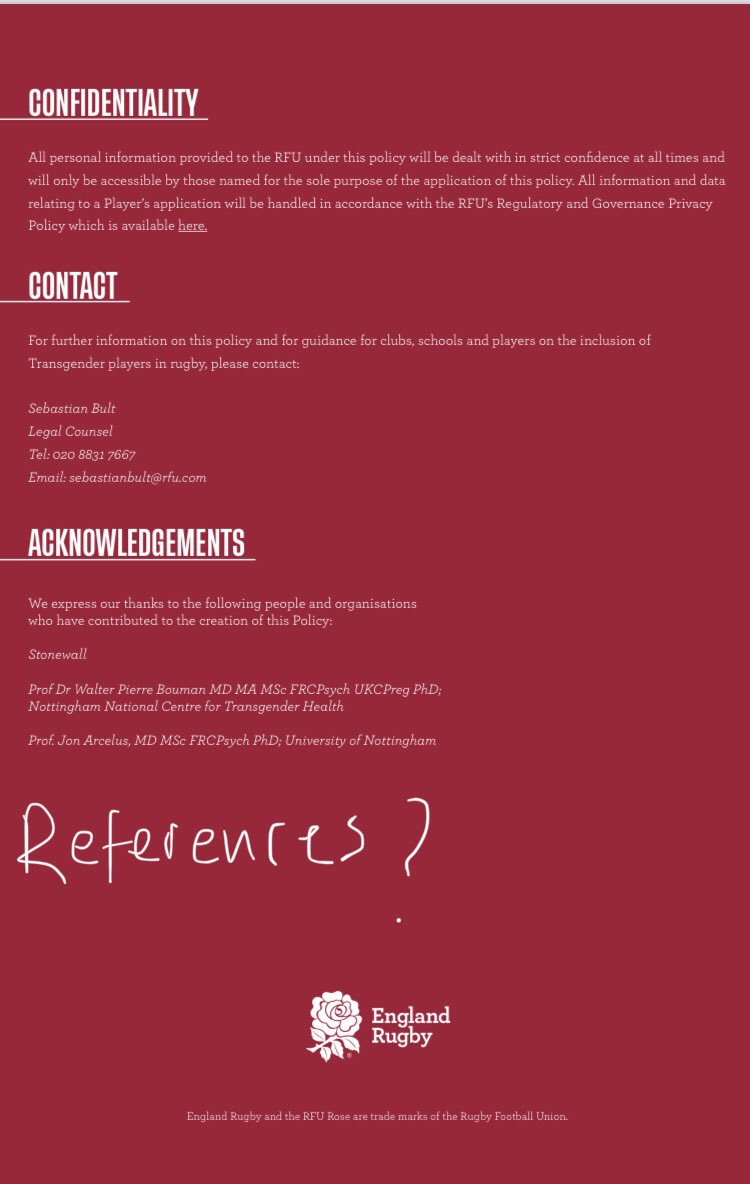
Jones et al., 2017 is repeatedly cited as evidence that transwomen do not have an advantage in female sports.
Here is my take.
Here is my take.
https://twitter.com/realphoenixfire/status/1320622306968915969
They performed a literature search of transwomen in sport and concluded that:
“Currently, there is no direct or consistent research suggesting transgender female individuals (or male individuals) have an athletic advantage at any stage of their transition.”
“Currently, there is no direct or consistent research suggesting transgender female individuals (or male individuals) have an athletic advantage at any stage of their transition.”
This conclusion is not supported by the data they analyse.
First, the review intended to examine sports policies and participation, and consists largely of qualitative/survey data examining the experiences of trans people in sport.
This is valuable insight.
First, the review intended to examine sports policies and participation, and consists largely of qualitative/survey data examining the experiences of trans people in sport.
This is valuable insight.
Jones captured a single experimental study of physical changes in transwomen – Gooren and Bunck, 2004 – and faithfully reported the original findings:
“In relation to transgender female individuals, Gooren and Bunck found testosterone levels had significantly reduced...
“In relation to transgender female individuals, Gooren and Bunck found testosterone levels had significantly reduced...
(cont)
...to castration levels after 1 year of cross-sex hormone treatment. Muscle mass had also reduced after 1 year of cross-sex hormone treatment. However, muscle mass remained significantly greater than in transgender male individuals (assigned female at birth)”
...to castration levels after 1 year of cross-sex hormone treatment. Muscle mass had also reduced after 1 year of cross-sex hormone treatment. However, muscle mass remained significantly greater than in transgender male individuals (assigned female at birth)”
The inclusion of experimental data in this review does not fulfil the intent of the review, and does not map to the overall conclusion made by Jones.
Furthermore, having captured one study of physical changes, Jones elected not to report other experimental studies of physical changes published within her search window (to Aug 2015), specifically Mueller et al., 2011, Wierckx et al., 2014 and Van Caenegem et al., 2015a/b.
At the time of her study collection, had the data been rigorously gathered, it would have collectively formed an emerging consensus that transwomen retain musculoskeletal advantage.
Since Aug 2015, there have been several more studies of physical changes in transwomen. The full data collection to March 2020 are collated in Hilton and Lundberg, 2020, collectively establishing that losses of muscle and strength are small.
Thus, Jones’ conclusion is rejected.
Thus, Jones’ conclusion is rejected.
Richardson and Chen, 2020 published a letter to the editor of Sports Medicine (where Jones published):
“First, the contention that transgender females have no athletic advantage at any stage of transitioning when competing against cisgendered females is highly questionable...”
“First, the contention that transgender females have no athletic advantage at any stage of transitioning when competing against cisgendered females is highly questionable...”
(cont)
“...as there is evidence to the contrary.
Second, the sporting policies provided to support the inclusion of transgender females seem to omit sports that require the physical components of strength, power, size, combat skills and speed.”
“...as there is evidence to the contrary.
Second, the sporting policies provided to support the inclusion of transgender females seem to omit sports that require the physical components of strength, power, size, combat skills and speed.”
(cont)
“These sports would present a greater athletic advantage for transgendered females.”
“These sports would present a greater athletic advantage for transgendered females.”
• • •
Missing some Tweet in this thread? You can try to
force a refresh





